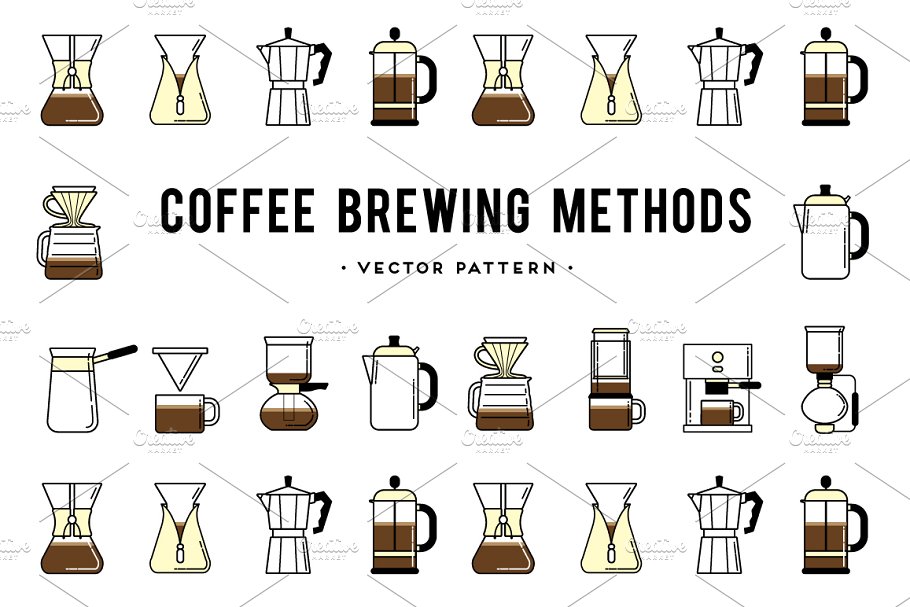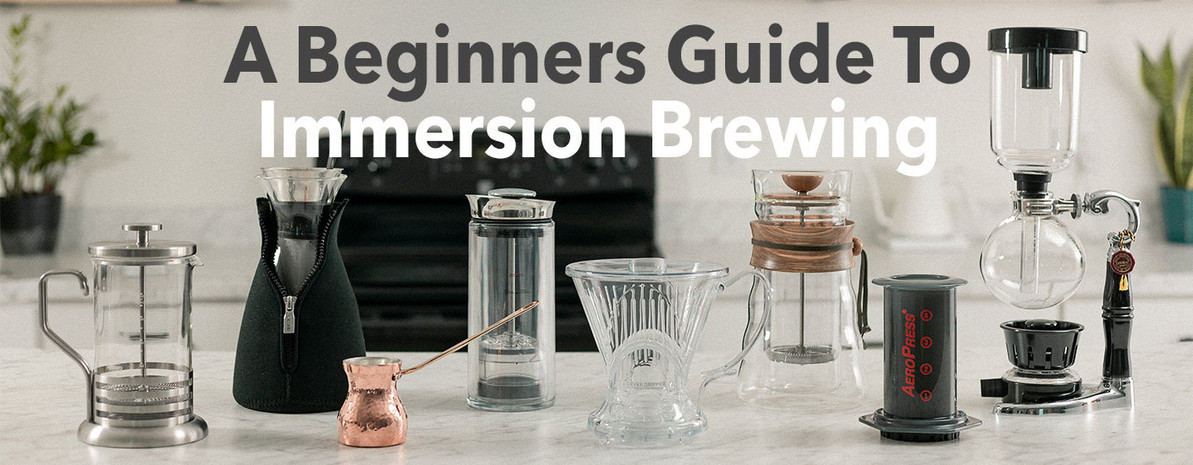Uncovering the Art of Coffee Brewing Methods: Tips for each Fanatic
Uncovering the Art of Coffee Brewing Methods: Tips for each Fanatic
Blog Article
The Scientific Research Behind Coffee Brewing: How Temperature and Time Affect Your Drink
Recognizing the scientific research behind coffee brewing discloses that temperature and time are not plain variables but critical elements that determine the beverage's flavor profile and overall top quality. As we discover the subtleties of these components, the concern arises: exactly how can one properly balance temperature level and time to accomplish that perfect mixture?
The Chemistry of Coffee Extraction
The chemistry of coffee removal delves right into the intricate procedures that change raw coffee beans into the fragrant beverage appreciated worldwide. This change largely involves the solubility of numerous compounds present in the beans, which are affected by factors such as work dimension, water quality, and the developing approach employed.
Throughout the developing process, warm water acts as a solvent, drawing out soluble substances, including caffeine, acids, sugars, and lipids, from the coffee premises. Each compound contributes to the taste account, fragrance, and body of the final beverage. For circumstances, acids are in charge of bright and tasty notes, while oils add to a rich mouthfeel.
The removal procedure is not consistent; various substances dissolve at different rates. The initial stages of brewing essence acids and sugars, causing a positive level of acidity, while prolonged extraction can lead to bitterness because of over-extraction of unfavorable compounds. Comprehending these chemical communications is vital for optimizing developing strategies, as the equilibrium in between extraction time and water temperature can considerably affect the total quality of the coffee. Inevitably, mastering the chemistry of coffee extraction is key to attaining a well-rounded and savory mug.
Ideal Developing Temperatures
Finding the best brewing temperature level is vital for unlocking the full potential of coffee flavors and aromas - coffee brewing methods. Research study suggests that the ideal variety for brewing coffee exists in between 195 ° F to 205 ° F(90 ° C to 96 ° C) Within this variety, the removal procedure successfully liquifies the preferable soluble substances in coffee beans, bring about a balanced and tasty mug
Developing at lower temperature levels, such as below 195 ° F(90 ° C ), might lead to under-extraction, generating a weak and acidic brew with soft flavors. Conversely, developing at temperature levels exceeding 205 ° F(96 ° C) can result in over-extraction, generating a bitter and extreme preference as a result of the extreme dissolution of undesirable compounds, such as tannins.
Moreover, the ideal brewing temperature can differ depending on the coffee bean type and roast level. Lighter roasts often profit from a little higher temperatures to improve their intricate flavor profiles, while darker roasts may be better suited to reduced temperatures to reduce resentment.
Ultimately, maintaining accuracy in brewing temperature levels is vital for attaining a harmonious equilibrium of tastes, making certain that every cup of coffee supplies a gratifying sensory experience.
Influence of Developing Time
Brewing time plays an essential role in identifying the flavor account and total quality of coffee. The removal procedure, which affects the preference, aroma, and body of the beverage, is mainly based on the length of time the coffee premises are in contact with water. Shorter brewing times can cause under-extraction, causing a sour or weak flavor, as not nearly enough soluble compounds are liquified. On the other hand, extended developing can bring about over-extraction, where unwanted substances are launched, resulting in an astringent or bitter preference.
Optimal developing time varies depending upon the technique utilized and the grind size of the coffee. For example, a French press usually needs regarding four minutes, while coffee extraction is typically completed within 25 to 30 seconds. It is vital to adjust brewing time in conjunction with various other variables, such as water temperature level and coffee-to-water proportion, to accomplish the desired taste profile.
Recognizing the impact of brewing time makes it possible for coffee lovers to improve their developing methods, eventually boosting the sensory experience of their cup (coffee brewing methods). With mindful attention to this variable, one can open the complete possibility of the coffee, revealing its special attributes and subtleties
Brewing Approaches and Their Impacts

As an example, methods like French press and cold mixture allow for a much longer steeping time, resulting in a fuller body and durable flavor as a result of raised removal of oils and soluble solids. Alternatively, coffee developing makes use of high stress and a much shorter removal time, generating a focused shot that stresses extreme tastes and an abundant crema.
Pour-over methods, such as Chemex or V60, use a more regulated removal process, permitting the maker to manipulate flow price and water distribution, which can enhance illumination and quality. At the same time, percolation techniques cycle water through the coffee grounds numerous times, causing a stronger, typically bitter taste.
Finally, the usage of paper filters versus steel filters can also influence the final taste; paper filters usually generate a cleaner cup by trapping oils and fine bits, while metal filters permit more oils to pass through, contributing to a fuller mouthfeel - coffee brewing methods. Recognizing these subtleties can boost the coffee experience considerably
Tips for Refining Your Mixture
A well-executed brew can transform also the simplest coffee right into a remarkable experience. Grind the beans simply before making to take full advantage of quality, making certain the grind dimension matches your brewing approach-- coarser for French press and finer for espresso.
Water top quality plays an essential role; use filtered water totally free from pollutants. The ideal developing temperature level varies between 195 ° F and 205 ° F(90 ° C to 96 ° C ) Too warm can scorch the coffee, while also cool might under-extract flavors.
Timing is useful site just as crucial. resource For immersion techniques, soaking for 3 to 5 mins is ideal, whereas drip approaches usually take around five minutes. Explore mixture times to discover your preferred strength.

Verdict
In summary, the elaborate partnership in between temperature and time is extremely important in the coffee developing process. Understanding these scientific concepts empowers individuals to fine-tune their brewing strategies, eventually leading to a much more balanced and enjoyable coffee experience.
Comprehending the science behind coffee developing exposes that temperature level and time are not plain variables yet essential aspects that dictate the beverage's flavor account and overall top quality. Comprehending these chemical interactions is critical for optimizing developing methods, as the equilibrium between extraction time and water temperature can substantially influence the overall high quality of the coffee.Brewing time plays a critical duty in identifying the taste account and overall top quality of coffee. By concentrating on these elements-- bean high quality, grind size, water temperature, steeping time, and proportion-- you can boost your coffee developing procedure, resulting in a constantly premium cup.
In navigate to these guys summary, the intricate connection in between temperature and time is vital in the coffee brewing procedure.
Report this page